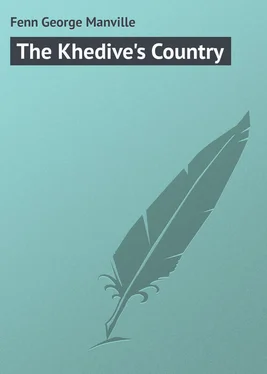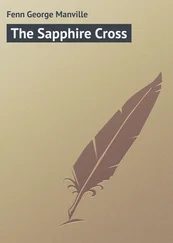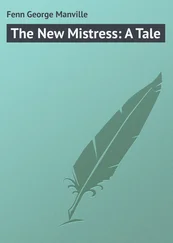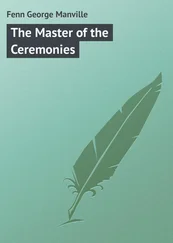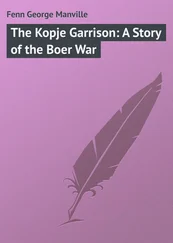George Fenn - The Khedive's Country
Здесь есть возможность читать онлайн «George Fenn - The Khedive's Country» — ознакомительный отрывок электронной книги совершенно бесплатно, а после прочтения отрывка купить полную версию. В некоторых случаях можно слушать аудио, скачать через торрент в формате fb2 и присутствует краткое содержание. Издательство: Иностранный паблик, Жанр: foreign_prose, Путешествия и география, на английском языке. Описание произведения, (предисловие) а так же отзывы посетителей доступны на портале библиотеки ЛибКат.
- Название:The Khedive's Country
- Автор:
- Издательство:Иностранный паблик
- Жанр:
- Год:неизвестен
- ISBN:нет данных
- Рейтинг книги:3 / 5. Голосов: 1
-
Избранное:Добавить в избранное
- Отзывы:
-
Ваша оценка:
- 60
- 1
- 2
- 3
- 4
- 5
The Khedive's Country: краткое содержание, описание и аннотация
Предлагаем к чтению аннотацию, описание, краткое содержание или предисловие (зависит от того, что написал сам автор книги «The Khedive's Country»). Если вы не нашли необходимую информацию о книге — напишите в комментариях, мы постараемся отыскать её.
The Khedive's Country — читать онлайн ознакомительный отрывок
Ниже представлен текст книги, разбитый по страницам. Система сохранения места последней прочитанной страницы, позволяет с удобством читать онлайн бесплатно книгу «The Khedive's Country», без необходимости каждый раз заново искать на чём Вы остановились. Поставьте закладку, и сможете в любой момент перейти на страницу, на которой закончили чтение.
Интервал:
Закладка:
So many of our agricultural outposts are only to be reached by long and tedious journeys across ocean and then inland. Egypt is, of course, in Africa, but only a few days’ journey from our own shores. The sea transit is short and frequent; and the country, the ancient mysterious land of the Dark Ages, is rapidly being opened out by rail. The climate, in spite of the heat, is one of the finest in the world, and its healthiness is proverbial; while, best of all for the would-be adventurer, it is under an enlightened rule, beneath which progress and civilisation are flourishing more and more.
Chapter Two
Reports from the highest quarters supply abundant statistics of the great advantage already manifested by the completion of the Nile Barrage. The increase of land available for culture through the conservation of the water that has always run to waste, and the augmented powers supplied for irrigation by holding up such vast bodies of water, have resulted in returns that are striking in the extreme, and this after so short a time has elapsed since the sluices were completed and the great dams put to the test. The value of land and rentals have gone up, water has been utilised at earlier dates than were customary of old, and everything points not only to stability but to a future for Egypt such as could not have been dreamed of a score of years ago. In connection, therefore, with its future prospects from an agricultural point of view, and the encouragement given by the Government to those who are disposed to enter upon a business career in this favoured country, so as to bring to bear experience, the knowledge of culture, and the use of improved implements to add vastly to Egypt’s produce, a short sketch of what has been done by one whose faith in the delta as a vast agricultural centre has always been strong, will not here be out of place.
We allude to the efforts made by his Highness the Khedive in acquiring and reclaiming tracts of land in the neighbourhood of Cairo and turning them into fertile farms.
A trip to one of these nearest to Cairo struck a visitor directly as being hall-marked by the stamp “Progress,” for it was reached by a little model railway which skirts his Highness’s estates. After leaving the station, a short drive brings the visitor almost at once to a series of scenes indicating careful management and model farming, though there is much in it that is novel to an English eye, consequent on its being contrived to suit the exigencies of an Eastern country where but little rain is known to fall.
One of the first objects reached upon entering the cultivated land was the great granary or store, composed of spacious erections of but one storey high, low-roofed, and enclosing a large central square. In some of these buildings were stored up sacks of corn, while in others lay large heaps of the newly picked cotton, of whose cultivation more will be said elsewhere.
The land around this highly cultivated domain is very fertile, and the air exhilarating; and at present it is letting at the rate of 10 pounds per feddan, which represents the Egyptian acre, something larger than our own. This is the present price, for enterprise so far has done little upon this side of Cairo in the shape of market gardening, although the district is only twelve minutes by rail from the centre of this important city, and one hour’s distance for a walking horse and cart.
Attached to the building above referred to were well-erected ranges of cattle-sheds, not occupied for fattening purposes, but for the culture of the farm, this culture being carried on not by horses, but by oxen – buffaloes and ordinary bullocks – which are regularly used, as at one time in Old England, yoked to the plough, harrow, or roller, and on some of the high grounds which are let by his Highness, for turning the water-wheels, though on the model farms steam power only is used for the purposes of irrigation.
These sheds are built in the same fashion as the granary, a noteworthy point in connection with the big, sleek, well-fed occupants being that instead of, as in English fashion, standing in one long row with their backs to the visitor, they are ranged in ranks, fifty-six in all, sideways to the spectator, facing so many feeding troughs, and each provided with its tethering halter and a sliding iron ring attached to an iron bar, giving freedom to each animal to stand or lie down at its pleasure without any risk of self-inflicted injury.
As a specimen of the model-farm-like erection of these buildings, it may be stated that the feeding troughs are of solid masonry, made impervious and clean by an inner lining of zinc. No partitions are used to separate these draught cattle, but by the arrangement of the haltering they can be kept at such a distance that no two could come into contact. Everything was beautifully clean, the great animals being amply supplied with dry earth for litter, its disinfecting qualities being admirable from a cleanly point of view, and valuable for the purposes of the farm.
One of the principal foods for cattle upon the farm is Tibn , as it is called by the Egyptians – chopped or bruised straw, made more nutritious, according to the needs of the animal in feeding, by the addition of beans or barley; and in the progress across the place a huge stack of this chaff-like provender was passed, some ten feet high, but totally unprotected from the weather by thatch. The reply to questions by the manager was simple in the extreme, yet in itself a chapter on the beautiful nature of the climate. The reason why the stack had no protecting thatch was that there was no need, the rain was so trifling, and when the wind and its habit of scattering stacks was mentioned, the inquirer was told that it did no harm.
In passing one enclosure sheep were encountered – a class of farming, as stated elsewhere, little affected on account of the absence of grass downs and ordinary grazing fields; but these were in a healthy, flourishing state, well fleeced, with a fine white semi-transparent-looking wool, indicating relationship to the Angora breed, specimens of the latter being seen later on in fold.
Some of the fields had been devoted to the growth of cotton. This had lately been picked and transferred to the great store, the wood of the beautiful plant so stored being yet upon the ground waiting for transfer to the stacks for fuel purposes, it being utilised for the steam engines used upon the farm, especially for working the water-raising machinery so extensively needed in this occasionally thirsty land.
Farther on an implement was being used in preparing fields for irrigation; and as in its simplicity of construction it was dragged over the great enclosure, it drew up the well-tilled, friable soil into ridges or slightly raised portions whose object was to regulate the flow of irrigating water equally all over the field, so that when it was flooded no portion should get more than its due share, one part being swamped while another would be comparatively dry. Simple in the extreme in its construction, as the illustration shows, the implement was thoroughly efficient in the way in which it did its work, with but slight exertion on the part of the sluggish oxen by which it was drawn.
All this was novel, yet paradoxically old-world and strange, but in the next field there was a combination of the old and new – a pair of oxen used as in Saxon times, and down to not so many years back even near London, patiently plodding along beneath their yoke and drawing an emanation from our Eastern counties in the shape of a Ransome and Sims’ harrow, light and effective, apparently as much at home and progressing as easily as if on a Suffolk farm.
There was a familiarity about these fields which took off the dead monotony of the level, for they were surrounded by good-sized, well-grown trees, whose aspect betokened health and a suitability of climate, while on a nearer approach they showed their foreignness to the soil, proving to be a variety of the well-known Siberian crab, or cherry apple, beloved of boys, but here grown in such bulk as to suggest being used for crushing and utilising in some special way.
Читать дальшеИнтервал:
Закладка:
Похожие книги на «The Khedive's Country»
Представляем Вашему вниманию похожие книги на «The Khedive's Country» списком для выбора. Мы отобрали схожую по названию и смыслу литературу в надежде предоставить читателям больше вариантов отыскать новые, интересные, ещё непрочитанные произведения.
Обсуждение, отзывы о книге «The Khedive's Country» и просто собственные мнения читателей. Оставьте ваши комментарии, напишите, что Вы думаете о произведении, его смысле или главных героях. Укажите что конкретно понравилось, а что нет, и почему Вы так считаете.
